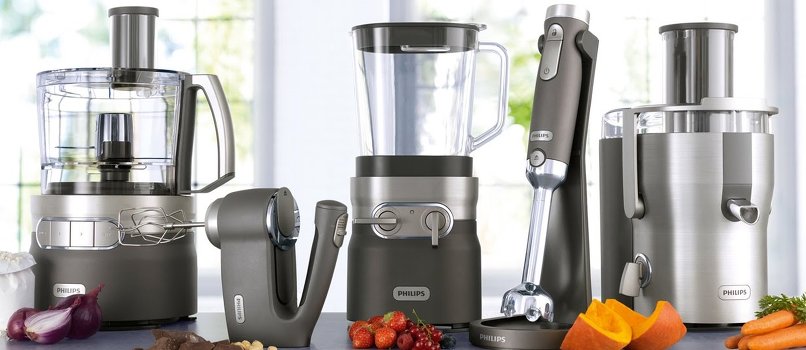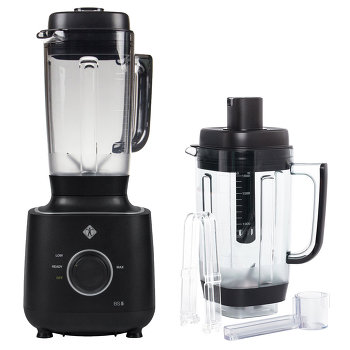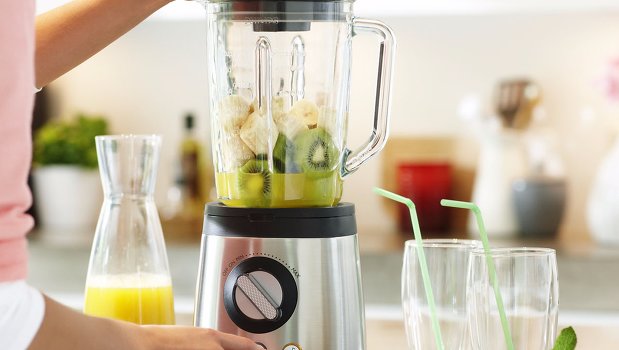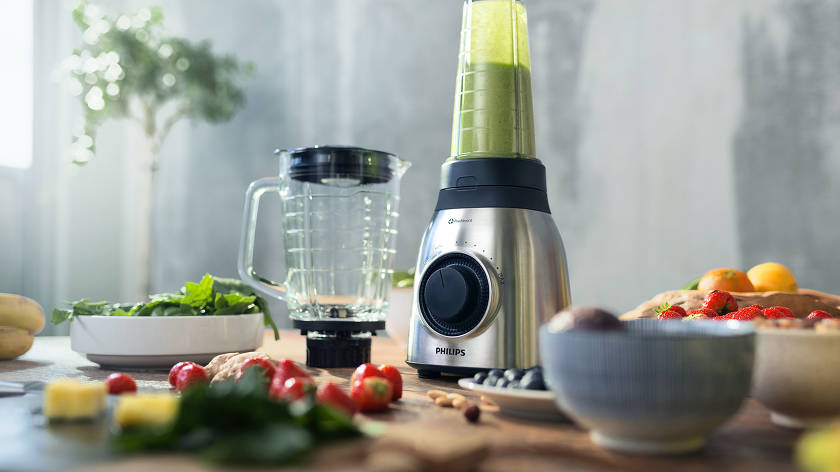It is worth saying right away that such inventions are not intended for cutting and shredding. For the assigned tasks it is definitely better to purchase food processor, even if the developers are full of advertising about the incredible potential and versatility of their product.
Principle of operation

It will not be a mistake to compare this invention with mixer. The only difference is in more functions of the blender and the presence of a container that prevents the spraying of food in the kitchen. To mix food, the user needs to place the ingredients in the bowl, select the mode and start the product. The process consists of the following steps:
- Installation of the necessary nozzle;
- Putting ingredients in a container;
- Placement of the working surface in the bowl;
- Connecting the device to the network;
- Mode selection and inclusion.
Based on the principle of operation, it becomes clear that there should not be any special problems in the operation of the device. However, when choosing a blender, consider the size of the power cord. To do this, first think about where the invention will stand.
Types of Blenders

To begin with, on the market there are so-called shredders sold in the form of flasks. They have a special knife and a motor nozzle in the design. Such blenders are chosen for crushing ice, vegetables, fruits. They cope with other tasks not in the best way.
For obvious reasons, we separately identified 3 types of blenders:
- Stationary - A category of household appliances involving the preparation of cocktails, waste, mashed soups. Many people call such devices "shakers." Such inventions consist of a bowl and stand. At the bottom there is a special knife, consisting of four, crosswise arranged parts. This design allows not only to knock down, but also to give consistency the necessary shape. If you don’t know which stationary blender to choose, consider that glass bowls are easier to wash than plastic ones, but they can be broken.
- Submersible - a more powerful product that provides for interaction with hot products. The submersible part of the models has a heat-resistant foot. Such inventions are faster and more compact, but they are not too convenient to use, since they must be held in your hand. On the other hand, such appliances are ideal for cooking in batches. Hand blender - the best choice for a small family;
- Combined Models - The personification of the merits of choppers and hand blenders. As a rule, they have more nozzles, a vacuum pump, which allows longer to store products inside.
Thus, a stationary blender is an excellent solution for cocktails, and a submersible one for a small family. If the family has children, you can purchase a chopper that easily grinds cooked vegetables and fruits.The combined analogue has the largest scope, but worse than the stationary analogue it handles the necks.
Bowl power and volume

When choosing a blender power, consider the dependence of productivity on bowl capacity and type of product. The volume of the jug can vary from 1 to 2 liters. As a rule, the actual volume of capacity is 200 grams less than that specified by the manufacturer. The optimal power of the stationary type assistant varies widely. It is better to choose from 250 to 350 watts. Submersible blenders have power from 130 to 1200 watts. The optimal choice is 600 watts.
The number of supported operating modes depends on performance: from 1 to 30. In this matter, everything depends solely on your interests and needs.
Options and types of nozzles

In most cases, the package includes nozzles for grinding, mixing, whipping. If you do not know which blender to choose, consider the purpose and number of additional parts:
- blender nozzle - for cocktails, smoothies, mashed potatoes;
- whisk for whipping - for mayonnaise, cream, sauces, kneading text;
- chopping bowl - for minced meat;
- mill - for chopping garlic, sugar, peas, coffee beans.
Some models can optionally be equipped with separate nozzles for mashed potatoes.
It is worth adding that the combined products are additionally equipped with a pump for pumping air. This allows you to increase the shelf life of food products inside the bowl. Very useful item!
How much does a good blender cost?

To choose good blender It is necessary to consider the price / quality ratio. Due to the excess of advertising, characteristics that are not true and the reviews bought by manufacturers, it is quite difficult to understand how much a normal unit costs. We will try to answer the question.
Please note that stationary blenders are more expensive than submersible counterparts, which, in turn, are inferior in price to combined solutions. On average, the difference in the cost of these types of goods is 10-15%. At the same time, the optimal price of a good stationary blender varies in the range from $ 30 to $ 35. If you intend to buy a good submersible analogue, you will have to pay from $ 40 to $ 45. Accordingly, the combined device costs another 10-15 dollars more.Thus, we examined the basic principles that should help you understand how blenders are selected based on their types and user needs. Good luck and have a good shopping!








